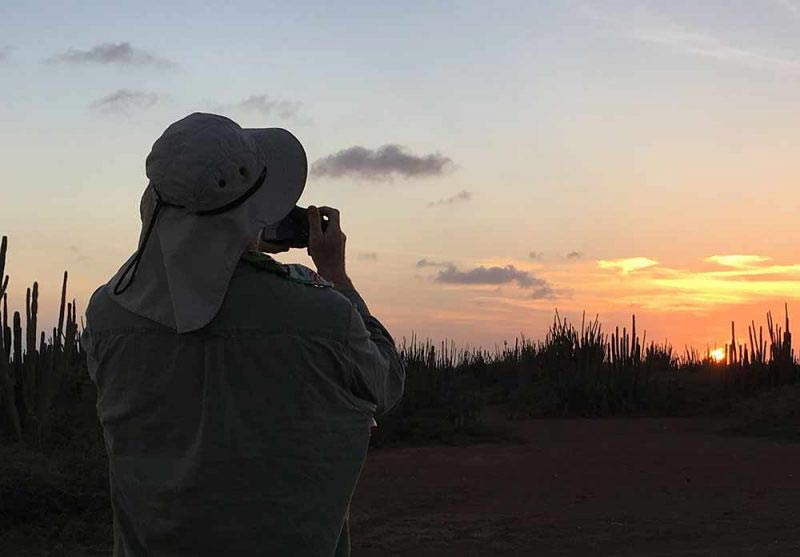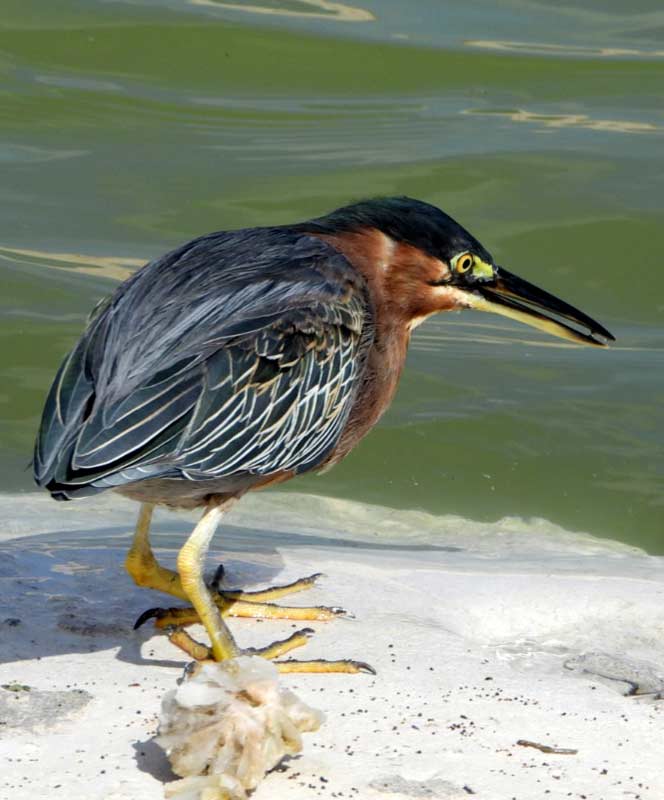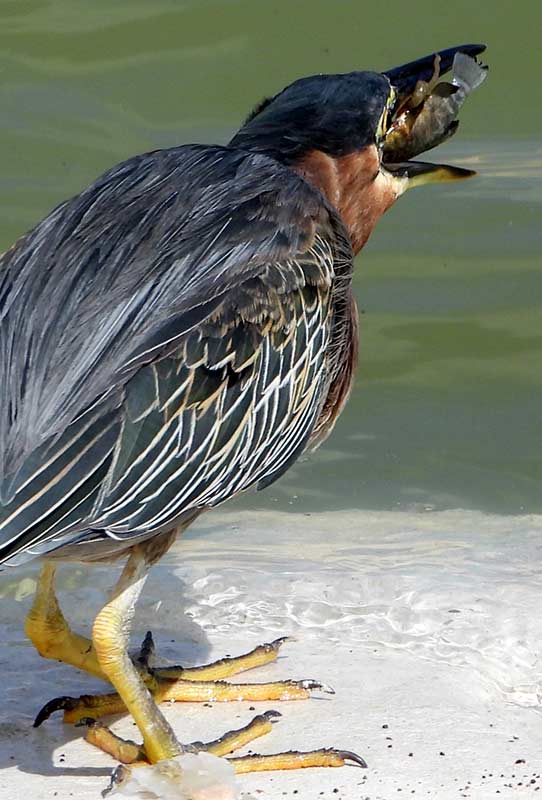Here are ten of the easiest tips to improve your Bonaire bird photography.
With the advent of such fabulous imaging technology that is now available in phones, “point-and-shoot” cameras, and bridge cameras, nearly anyone can take phenomenal bird pictures! If you say to yourself, “Why are my pictures just so-so?” Perhaps these ten tips will help you get the bird images you have in your mind’s eye when you enjoy your Bonaire bird photography.
And here’s another tip–the majority of these pointers will also help to improve your underwater photography as well!
#1 Always approach in a non-threatening manner.
The birds will know the minute you arrive on the scene. After all, their lives depend upon keeping tabs on their immediate areas. When you move, move slowly and thoughtfully, and allow the bird to get used to your presence. Many times your vehicle can be used as a blind. This is especially important when you wish to photograph flamingos. Stay in the vehicle and zoom in, because the minute you get out of the car, the flamingos will be turning tail and walking away.
#2 Adopt the pace of nature: Her secret is patience.
If you were successful in getting close to your subject, the next attribute is patience. You’ll know the minute the bird has decided you are safe because it will return to its normal behaviors, be that feeding, preening, or hunting. If your subject is still carefully watching you, just stand or sit quietly and wait until it forgets about you.
#3 If possible, put the sun at your back.
Most days on Bonaire are sunny. This works wonderfully for taking images since colors will be saturated. By putting the sun behind you, it should be shining upon your subject, showing wonderful colors, but also allowing your camera to choose a better exposure and making it easier for the auto-focus to properly work. You’ll also have the added advantage that shadows will be behind your subject, which is less distracting.
#4 Get low and shoot upward.
Not only is this less threatening to your subject, but by shooting in an upward angle, you separate the subject from its busy background.
#5 Make the most of your camera’s settings.
If your camera allows you to change settings, these are the best to employ:
- Turn off sounds, especially if you are working close to your subject.
- Use the aperture to your advantage: Use a low-numbered f-stop to blur the background, or use a high-numbered f-stop to increase the depth of field (the area in your picture from front to back which is in sharp focus).
#6 Composition is king.
When composing the image, be sure that you focus on the eye. Once the focus is locked in, then recompose the image to a more pleasing manner. Generally, it is considered better composition to have the main area of interest in one of four points on the image. Imagine a tic-tac-toe grid overlaying your image. The four points where the lines intersect are the areas of greatest importance in your image. Be sure the eye is sharp!
In this image of a Reddish Egret, the main area of interest is the open bill and tongue, as the bird was cooling itself from September’s heat. Since birds do not have sweat glands, some can regulate their body temperature through the respiratory tract by panting–another behavior to capture!
#7 Don’t interrupt an animal’s normal behaviors.
If you’ve been accepted and deemed safe by your subject, it will have gone on to continue its normal behavior, whether that is hunting, feeding, preening, or engaging in courtship. In any nature photography, ensure you do not interrupt these behaviors as they could be imperative to the animal’s survival.
And whatever you do, don’t molest or chase after birds. They can fly away much faster than you can walk or run, and images of tail feathers are not really interesting!
#8 Do photograph an animal’s normal behaviors.
A pretty picture of a bird is just that–a pretty picture. But when you add in a behavior to your photograph, it tells a story. Viewers of your images will learn much more about the bird when they can see what the bird is doing. To illustrate this, take a look at these two images of a Green Heron. Which do you find more exciting?
#9 Learn your birds!
Just like knowing your fish can help you find and photograph them, learning a bit about the birds you’ll encounter on Bonaire will also assist with getting stunning images. By learning the birds’ habits, you’ll know when and where to look for them, and you can better anticipate their behaviors. Be sure to pick up one of the field guides that are available and which highlight birds of this region.
#10 Shoot, shoot, and shoot some more!
In the olden days of film, it was expensive to keep shooting. In today’s digital world, what are a few more bytes? When you find a great subject, take full advantage of it, and keep shooting until you know you have captured the essence of the subject. Do edit carefully, choosing only the very best for your “keepers.”
Bonaire is all about nature!
It really doesn’t matter why you visit Bonaire………………it can be for the great snorkeling, diving, or higher adrenaline pursuits such as windsurfing or kiteboarding. But nearly everyone who visits Bonaire visits to enjoy the island’s nature in some form. So, on your next Bonaire vacation, embrace all aspects of Bonaire’s nature, and take a few moments to enjoy Bonaire bird photography.
(Source: Bonaire Insider Reporter)














